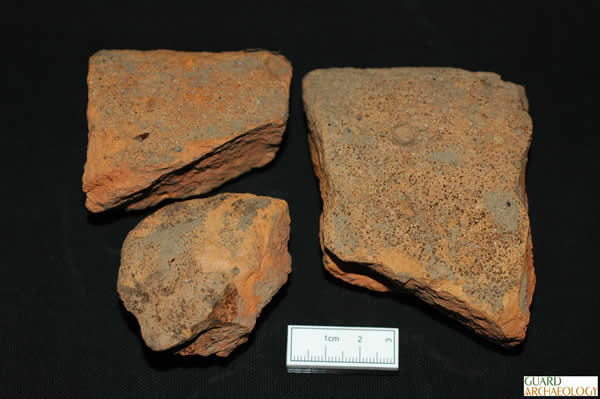Recent excavations at the Roman Cavalry Fort at Carzield near Dumfries revealed new evidence of its occupation during the Antonine period when the Romans made their final advance to establish the northern frontier of The Antonine Wall in the mid-second century AD.
The archaeological remains encountered included cobbled surfaces as well as ditch and gully features which relate to the internal divisions of the fort and the ramparts. Artefacts recovered during the work included a large flue tile from a hypocaust heating system probably used in the fort's bath house, which was revealed in excavations in the 1940s and 1950s. Two sherds of Samian Ware were also identified as deriving from a vessel manufactured in the central Gaulish Les Martres-de-Veyre workshop during the early to mid-second century AD. A fragment of curved roof tile or imbrex, numerous metal finds including rows of hobnails with evidence of mineralised leather on their shanks, an iron javelin-head with part of the wooden shaft intact, several Roman nails and two sherds of black-burnished pottery were also discovered. Archaeobotanical analysis revealed the presence of cereal crops from ditch fills with evidence of wattle and daub structures also present. Post-excavation analyses of this material is currently underway and several radiocarbon dates are pending: these will be the first radiocarbon dates to be acquired from investigations at Carzield Roman Fort.

